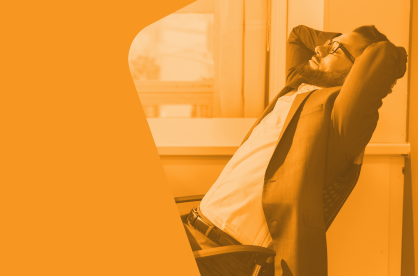
Psychological stress can be a useful phenomenon in the short-term, but when overwhelming and prolonged it can lead to profound medical and mental health issues.
Stress management is therefore an essential skill to develop to ensure optimal health and well-being. The ability to rapidly de-stress is an important one, in order to hopefully avoid the regular and persistent stress that can be so damaging to health in the long-term.
In this article, we will briefly review ten indispensable ways to rapidly de-stress based on the latest research evidence.
Breathing Techniques
The use of breathing strategies can be invaluable in supporting a rapid shift into parasympathetic mode. The greater the parasympathetic shift, the less stress you feel. Examples of these breathing strategies are found in yoga, for instance, which has been shown to improve self-reported measures of perceived stress, sleep, social connectedness, distress, anxiety, depression, and self-esteem, among others [1,2].
Mastering breath control using slow breathing techniques can enhance autonomic, cerebral, and psychological flexibility that can promote stress reduction. By pacing breathing, a calm and relaxed state can effectively be promoted and sustained [3]. What’s more, breathing more deeply is a noted technique for reducing stress and improving mood. A study of 38 university students found that a 90-minute “Anti-Stress Protocol” employing deep breathing improved self-reported stress and mood whilst also reducing heart rate and saliva cortisol (a useful biomarker of stress) [4]. When fully engaging the stomach, abdominal muscles, and diaphragm during breathing (“diaphragmatic breathing”), stress can also be decreased as shown by physiological markers and self-report tools [5,6].
Cold Therapy
Cold therapy triggers a drop in heart rate while also increasing (improving) heart rate variability (i.e., the amount of time between each heartbeat fluctuates slightly – this can only be detected with special machines). These effects are due to parasympathetic activation via the vagus nerve [7]. In addition, sympathetic activation leads to the release of endorphins, hormones that are released during pain, stress, or pleasurable activities. Natural endocannabinoids like anandamide, our bliss neurotransmitter, are also released. Taking cold showers regularly could help reduce anxiety due to the effects of water on the peripheral circulation, as well as the levels of certain hormones [8].
Sauna
Saunas induce sympathetic activation with endorphin and endocannabinoid release (as in cold therapy above) as well as rebound parasympathetic dominance after leaving the hot environment. Cortisol, a well-known hormone associated with stress, also drops during sauna sessions. With repeated sessions, sauna use optimizes stress responses via hormesis and heat shock proteins [9].
Orgasm
Orgasms release oxytocin, a hormone that decreases other stress-associated hormones like cortisol, reduces blood pressure, increases resistance to pain, lowers anxiety, and makes you feel more connected, or bonded, to your partner [10]. Plus, you want to cuddle. What’s not to like? Research has shown that daily stress and relationship satisfaction is negatively correlated with sexual activity [11] (i.e., the more stress, the less sex… don’t let this be you!).
Gardening and Time in Outdoor Spaces
A study from 2011 observed that 30 minutes of outdoor gardening or indoor reading on an allotment plot reduced saliva cortisol and self-reported mood, with stronger decreases in the gardening group. Notably, this was one of the first studies to show that gardening can aid in recovery from acute psychological stress [12].
More recent research has shown that the provision of outdoor respite areas and garden facilities at hospitals during the pandemic aided in combatting the stress and anxiety experienced by healthcare staff [13].
Exercise
Physical exercise can rapidly reduce psychological distress. Research from the early 1990s showed that an acute bout (~40 min) of aerobic training dampened the blood pressure response to psychosocial stress, and reduced the frequency and intensity of anxiety-related thoughts in healthy women between 25 and 40 years of age [19]. A more recent study also showed that acute exercise improves physiological and psychological measures of stress reactivity in adolescents [20].
Meditation
Meditation is another famous way to rapidly de-stress by increasing parasympathetic tone. Several notable celebrities and influential figures swear by its ability to calm and lower stress levels. There are many techniques and variations of meditation, some that use breath, others that use movement including yoga or dance, whereas others use tantric practice [12-14].
In healthcare workers, a profession renowned for being associated with high levels of stress and burnout, three months of transcendental meditation practiced twice daily for 20 minutes reduced burnout, insomnia, and anxiety, suggesting that it can relieve chronic stress in this population [15]. Other research has shown that mindfulness meditation can improve the physiological markers of stress, such as cortisol, blood pressure, heart rate, blood lipids (fats), and peripheral cytokine (inflammatory proteins) concentrations [16].
Scream
For some of us, watching horror movies can decrease stress and anxiety. This is because of the amazing (and somewhat surprising!) benefits of screaming. The continuing buildup and release of tension by screaming resets our autonomic nervous system and releases endorphins, those very important “feel good” hormones.
(Belly) Laugh
Can you make yourself belly laugh? When we laugh, our intake of oxygen-rich air is enhanced and there is an intake in endorphin release by our brain. A good laugh also increases and then rapidly decreases sympathetic tone [17]. A recent study combined laughter with yoga and found that it effectively reduced perceived stress and burnout while also increasing life satisfaction in nurses during the pandemic [18]. In a similar group of nursing students during the pandemic, laughter therapy was found to reduce anxiety and improve psychological well-being and life satisfaction [19].
Find a Puppy, Stat!
Petting and rolling around with the closest puppy you can find when stressed will quickly decrease cortisol levels and subjective levels of stress. A meta-analysis (pooled study of all available research evidence on a given topic) found that pet therapy lowered heart rate, self-reported anxiety, and self-reported stress in a total sample of 1,310 participants [20]. This is why you tend to find service animals at hospitals, nursing homes, hospice centers, and anywhere else where stress or loneliness is high [20]. So-called "canine therapy" has also been explored as a strategy to help military veterans with post-traumatic stress disorder (PTSD), showing a large effect on symptom severity scores [21].
Bonus #11: Troscriptions' Tro Calm
For calm on demand, Tro Calm works its magic using a combination of kava, CBD, CBD, and nicotinoyl-GABA. As with all of our buccal troches, Tro Calm is precision dosed, pharmaceutical grade, physician formulated, and your dose can be calibrated depending on your needs.
¼ troche: Take the edge off and perform better with continued focus.
½ troche: More relaxed, less focused. A great starting dose for most people. Turns off your brain to help you get to sleep easier.
¾ to 1 full troche: Much more relaxed and much less focused.
Tro Calm and Carry On!
References
[1] M.R. Goldstein, R.K. Lewin, J.J.B. Allen, Improvements in well-being and cardiac metrics of stress following a yogic breathing workshop: Randomized controlled trial with active comparison, Journal of American College Health. 70 (2022) 918–928. https://doi.org/10.1080/07448481.2020.1781867.
[2] A. Zaccaro, A. Piarulli, M. Laurino, E. Garbella, D. Menicucci, B. Neri, A. Gemignani, How Breath-Control Can Change Your Life: A Systematic Review on Psycho-Physiological Correlates of Slow Breathing, Front Hum Neurosci. 12 (2018) 353. https://doi.org/10.3389/fnhum.2018.00353.
[3] O.J. Krentzman, The Cognitive, Psychological, and Physical Effects of Wim Hof’s Breathing Method: An Exploratory Study, Unpublished, 2021. http://rgdoi.net/10.13140/RG.2.2.12026.62403 (accessed October 3, 2022).
[4] V. Perciavalle, M. Blandini, P. Fecarotta, A. Buscemi, D. Di Corrado, L. Bertolo, F. Fichera, M. Coco, The role of deep breathing on stress, Neurol Sci. 38 (2017) 451–458. https://doi.org/10.1007/s10072-016-2790-8.
[5] S.I. Hopper, S.L. Murray, L.R. Ferrara, J.K. Singleton, Effectiveness of diaphragmatic breathing for reducing physiological and psychological stress in adults: a quantitative systematic review, JBI Database System Rev Implement Rep. 17 (2019) 1855–1876. https://doi.org/10.11124/JBISRIR-2017-003848.
[6] X. Ma, Z.-Q. Yue, Z.-Q. Gong, H. Zhang, N.-Y. Duan, Y.-T. Shi, G.-X. Wei, Y.-F. Li, The Effect of Diaphragmatic Breathing on Attention, Negative Affect and Stress in Healthy Adults, Front Psychol. 8 (2017) 874. https://doi.org/10.3389/fpsyg.2017.00874.
[7] M. Buchheit, J.J. Peiffer, C.R. Abbiss, P.B. Laursen, Effect of cold water immersion on postexercise parasympathetic reactivation, American Journal of Physiology-Heart and Circulatory Physiology. 296 (2009) H421–H427. https://doi.org/10.1152/ajpheart.01017.2008.
[8] M. Kox, L.T. van Eijk, J. Zwaag, J. van den Wildenberg, F.C.G.J. Sweep, J.G. van der Hoeven, P. Pickkers, Voluntary activation of the sympathetic nervous system and attenuation of the innate immune response in humans, Proc Natl Acad Sci U S A. 111 (2014) 7379–7384. https://doi.org/10.1073/pnas.1322174111.
[9] R.P. Patrick, T.L. Johnson, Sauna use as a lifestyle practice to extend healthspan, Experimental Gerontology. 154 (2021) 111509. https://doi.org/10.1016/j.exger.2021.111509.
[10] K. Uvnas-Moberg, M. Petersson, [Oxytocin, a mediator of anti-stress, well-being, social interaction, growth and healing], Z Psychosom Med Psychother. 51 (2005) 57–80. https://doi.org/10.13109/zptm.2005.51.1.57.
[11] G. Bodenmann, D.C. Atkins, M. Schär, V. Poffet, The association between daily stress and sexual activity., Journal of Family Psychology. 24 (2010) 271–279. https://doi.org/10.1037/a0019365.
[12] A.E. Van Den Berg, M.H.G. Custers, Gardening promotes neuroendocrine and affective restoration from stress, J Health Psychol. 16 (2011) 3–11. https://doi.org/10.1177/1359105310365577.
[13] S.A. Iqbal, I.R. Abubakar, Hospital Outdoor Spaces as Respite Areas for Healthcare Staff During the COVID-19 Pandemic, HERD. 15 (2022) 343–353. https://doi.org/10.1177/19375867221111530.
[14] B. Vandana, L. Saraswathy, G.K.S. Pillai, K.R. Sunadaram, H. Kumar, Meditation induces a positive response during stress events in young Indian adults, Int J Yoga. 4 (2011) 64–70. https://doi.org/10.4103/0973-6131.85487.
[15] M. Goyal, S. Singh, E.M.S. Sibinga, N.F. Gould, A. Rowland-Seymour, R. Sharma, Z. Berger, D. Sleicher, D.D. Maron, H.M. Shihab, P.D. Ranasinghe, S. Linn, S. Saha, E.B. Bass, J.A. Haythornthwaite, Meditation Programs for Psychological Stress and Well-being: A Systematic Review and Meta-analysis, JAMA Intern Med. 174 (2014) 357. https://doi.org/10.1001/jamainternmed.2013.13018.
[16] J. Galante, G. Dufour, M. Vainre, A.P. Wagner, J. Stochl, A. Benton, N. Lathia, E. Howarth, P.B. Jones, A mindfulness-based intervention to increase resilience to stress in university students (the Mindful Student Study): a pragmatic randomised controlled trial, Lancet Public Health. 3 (2018) e72–e81. https://doi.org/10.1016/S2468-2667(17)30231-1.
[17] S.P. Joshi, A.-K.I. Wong, A. Brucker, T.A. Ardito, S.-C. Chow, S. Vaishnavi, P.J. Lee, Efficacy of Transcendental Meditation to Reduce Stress Among Health Care Workers: A Randomized Clinical Trial, JAMA Netw Open. 5 (2022) e2231917. https://doi.org/10.1001/jamanetworkopen.2022.31917.
[18] M.C. Pascoe, D.R. Thompson, Z.M. Jenkins, C.F. Ski, Mindfulness mediates the physiological markers of stress: Systematic review and meta-analysis, J Psychiatr Res. 95 (2017) 156–178. https://doi.org/10.1016/j.jpsychires.2017.08.004.
[19] W.J. Rejeski, A. Thompson, P.H. Brubaker, H.S. Miller, Acute exercise: buffering psychosocial stress responses in women, Health Psychol. 11 (1992) 355–362. https://doi.org/10.1037//0278-6133.11.6.355.
[20] M. Mücke, S. Ludyga, F. Colledge, U. Pühse, M. Gerber, The Influence of an Acute Exercise Bout on Adolescents’ Stress Reactivity, Interference Control, and Brain Oxygenation Under Stress, Front Psychol. 11 (2020) 581965. https://doi.org/10.3389/fpsyg.2020.581965.
[21] D. Louie, K. Brook, E. Frates, The Laughter Prescription: A Tool for Lifestyle Medicine, Am J Lifestyle Med. 10 (2016) 262–267. https://doi.org/10.1177/1559827614550279.
[22] A. Si S Çeli K, T. Kılınç, The effect of laughter yoga on perceived stress, burnout, and life satisfaction in nurses during the pandemic: A randomized controlled trial, Complement Ther Clin Pract. 49 (2022) 101637. https://doi.org/10.1016/j.ctcp.2022.101637.
[23] C. Eraydin, S.E. Alpar, The effect of laughter therapy on nursing students’ anxiety, satisfaction with life, and psychological well-being during the COVID-19 pandemic: Randomized controlled study, Adv Integr Med. 9 (2022) 173–179. https://doi.org/10.1016/j.aimed.2022.06.006.
[24] N. Ein, L. Li, K. Vickers, The effect of pet therapy on the physiological and subjective stress response: A meta-analysis, Stress Health. 34 (2018) 477–489. https://doi.org/10.1002/smi.2812.
[25] S.C. Leighton, L.O. Nieforth, M.E. O’Haire, Assistance dogs for military veterans with PTSD: A systematic review, meta-analysis, and meta-synthesis, PLoS One. 17 (2022) e0274960. https://doi.org/10.1371/journal.pone.0274960.





Comments (0)
There are no comments for this article. Be the first one to leave a message!